

 The South African
The South African
by T.C.D. Leaver
Curtain Raiser Address to the Johannesburg Branch on 8 August 2019I have no intention of trying to report on TE Lawrence's famous exploits in the desert war, which he led, so brilliantly, along the route of the Hejaz railway, which ran from Damascus to Medina. The title of my short discourse is " Perspectives on the life and death of T.E. Lawrence". I hope that the snippets of information which I pass on will enlighten you into some of the more interesting aspects of Lawrence's life, as well as his very sudden and sad death.
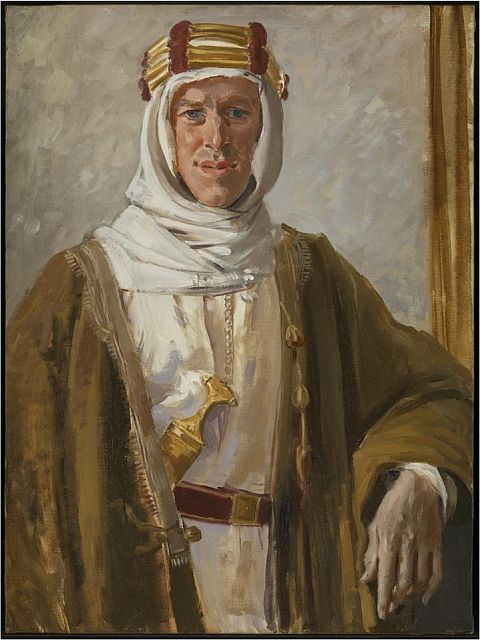
TE Lawrence in his desert attire
His father was Sir Thomas Chapman, an Irish aristocrat and landowner who was married with 4 daughters. Sir Thomas engaged the services of 18-year old Sarah Lawrence as a nursemaid and governess for the 4 daughters in 1879. It did not take long before the charms of Sarah led to an affair between the two beginning, which led to the birth of an illegitimate son in 1885. The scandal caused by this event led to Sir Thomas abandoning his wife and daughters and fleeing to England, where he led an itinerant life. At the same time he assumed Sarah's surname for the family when in the public eye. In 1888 a second illegitimate son was born in Wales - he was called Thomas Edward and nicknamed "Ned". Eventually, 3 more sons followed.
In later years, and especially when TE Lawrence was himself trying to change his name and move from the Army to the Air Force and vice versa, he encountered some serious administrative problems because of the surname and birth documentation issues.
As can be seen from this photo, they were a band of very fine looking young men but could have been called the "Band of bastards" rather than the "Band of Brothers"
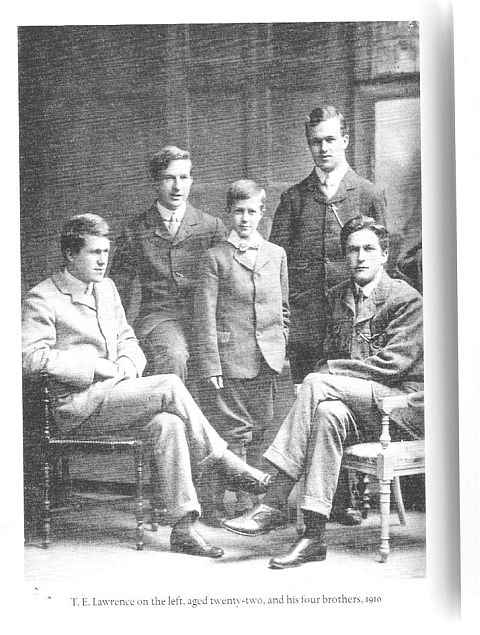
These boys only discovered the full truth of their Parents relationship in 1919, after the death of their father.
Two of TE Lawrence's brothers shown in this picture died in the 1st World War.
Sir Thomas eventually settled in the City of Oxford, where TE Lawrence went to School. At school he developed an intense interest in the medieval era and antiquities. Lawrence would pay workmen doing building excavations in Oxford to pass on to him any unearthed items, beads, pottery and coins. He started to range away from home to Cathedrals and Castles all over England and Wales in order to study and draw fine details of layouts and armour used by Knights and Soldiers. He frequented the famous Ashmolean Museum in Oxford and at the same time became friendly with leading researchers and experts in expeditions travelling all over the World, especially to sites in Egypt, Syria and Jordan and Iraq.
His travels around Britain led him to obtain permission from his mother to go on an extended bicycle tour of Brittany and NW France. He noticed differences in the Castles he encountered, and became more and more convinced that this aspect needed proper research. In discussing these points of interest he attracted the attention of leading Academics at Oxford University.
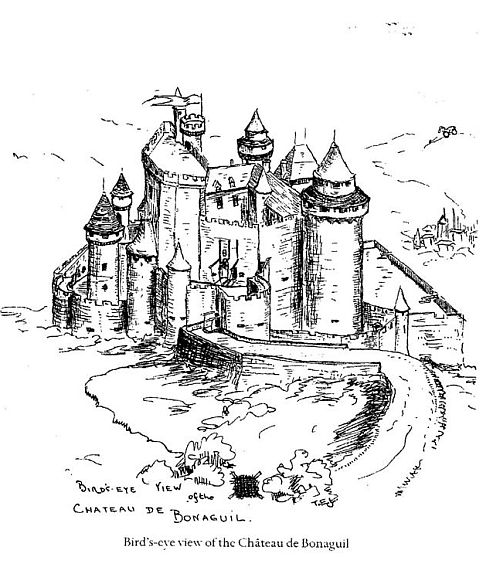
Château de Bonaguil Exterior
In 1907 Lawrence spent his vacation riding his bicycle all around Wales examining the Castles in that part of Britain. He went up to Jesus College, Oxford in 1908, and decided with his supervisor that he wanted to do research into the inter-relationship between the ancient Castle structures of Wales, England Scotland and those of France. He then made comparisons with the Crusader Castles in the Middle East and along the routes followed by the Crusaders.
In doing this research Lawrence became highly skilled at drawing the fine points of every Castle he investigated ... this ran into hundreds over the years.
Lawrence spent a great deal of time either walking or riding a bicycle around Syria, Turkey, Jordan, Malta and France. He lived rough and amongst ordinary people in the Middle East, and very quickly learnt to speak Arabic, even mastering some variety of dialects. This was to serve him well a few years later.
The picture illustrates how carefully he drew details of every Castle which he studied. Shown here are important details of the interior designs at the Castle at Bonaguil in France. Every subtlety is explained in Lawrence's notes.
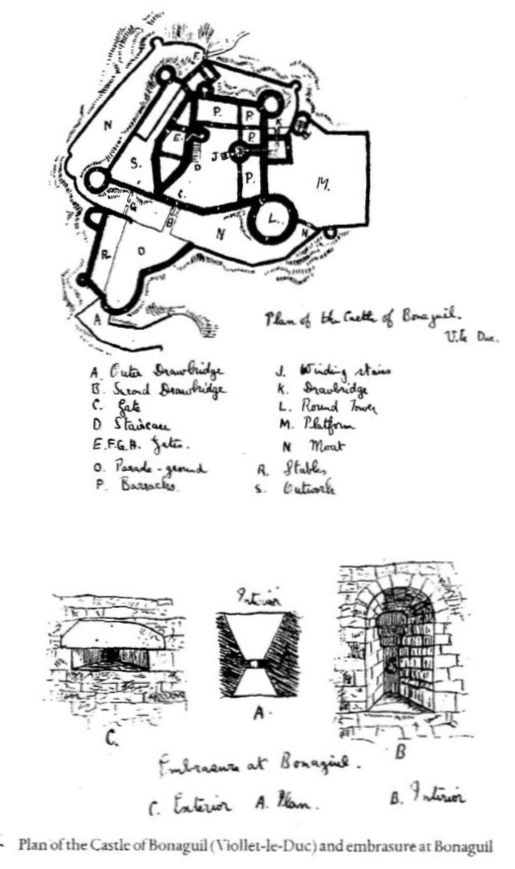
Details of the Château de Bonaguil
* * * * * * *
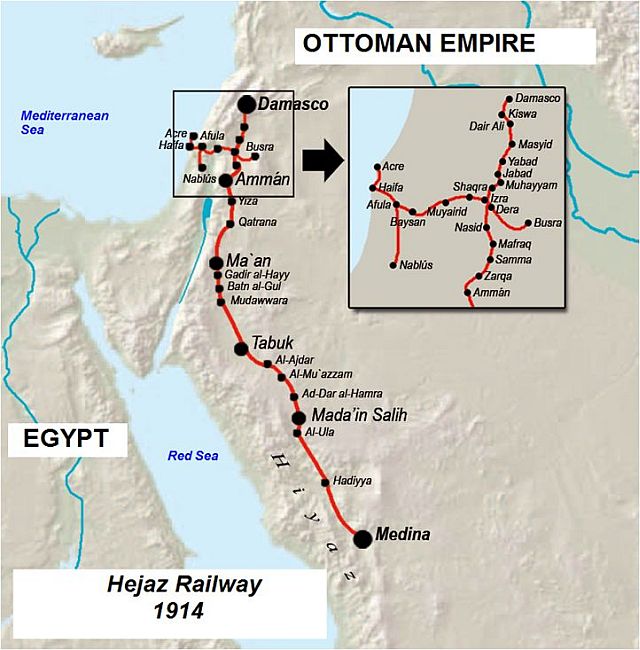
Map
The Ottoman Empire started in Turkey and lasted for over 400 years. Its final days were speeded by the advent of the 1st World War, in which the Turks were aligned with the Germans and had the use of the Hejaz Railway, shown here. As can be seen, it allowed access to the East and India and thereby bypassed the Suez canal, controlled by Britain and France. The British Army made it a priority to prevent the use of the railway. Because of his familiarity with the language and habits of the Bedouin tribes in the Deserts of Egypt, Syria, Iraq and Saudi Arabia Lawrence was called up to serve at Intelligence HQ in Egypt under British control at the time. He chose to go amongst the tribes, and to wage a guerilla campaign against the Turks destroying bridges and long sections of the railway, until it was unusable by the Ottoman Turks as well as their controlling Allies the Germans.
At the same time General Allenby was ordered to move through Egypt and the Sinai desert and take Damascus.
Lawrence earned the respect of the Tribal Heads of the different Kingdoms who had roamed the desert for thousands of years. He promised them that victory against the Turks would facilitate their being able to retain control of their own areas.
At the end of the War, the Allies had several very important Conferences from 1921 onwards. All of the major players were represented, and France made unreasonable demands to control Syria. There was great disappointment amongst the Tribal leaders when their Countries were divided amongst the European nations before they were able to make their full claims. The Hashemite tribe were fortunate to get Jordan because of British support, and they still control that Country to this day. But to appease France, a ridiculous line known as the "Sykes Picot Line" was drawn across the desert between Iraq and Syria and France took control of Syria where subsequent turmoil caused uprisings and many deaths. Syria's royal tribe were eventually displaced by the Military (Assad family who are still there today ). In Iraq, Britain assisted the Faisals to assume their throne. They were assassinated in a bloody coup in 1958.
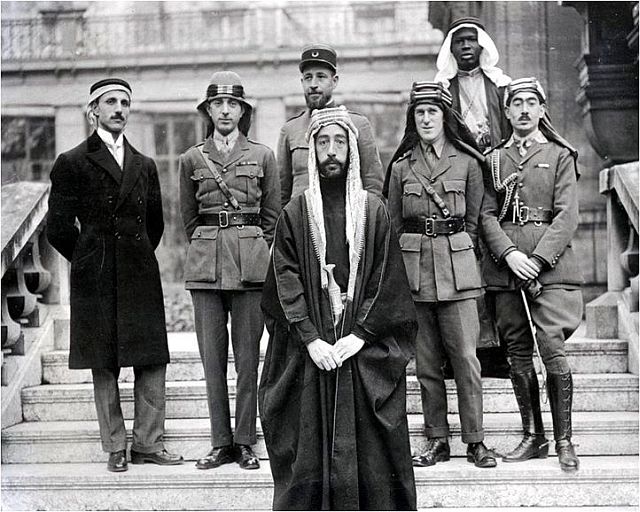
This picture shows the delegation of the Saudi King Faisal, whose descendants still rule that Kingdom. Notice TE Lawrence behind the King's left shoulder.
Lawrence felt completely betrayed by the results of the Conferences. He withdrew from society and changed his name to "Ross", then to "Shaw", after which he enlisted in the Royal Air Force. In a private interview with King George he rejected his awards of a DSO and Knighthood to show his shame that Britain had betrayed the Arabs who helped overthrow the Ottoman enemy.
But he did assist Winston Churchill a great deal for 2 years in the later part of the 1920s by working on projects to settle the Political Future of the Middle East.
He loved riding and owning very fast Motor Bikes.
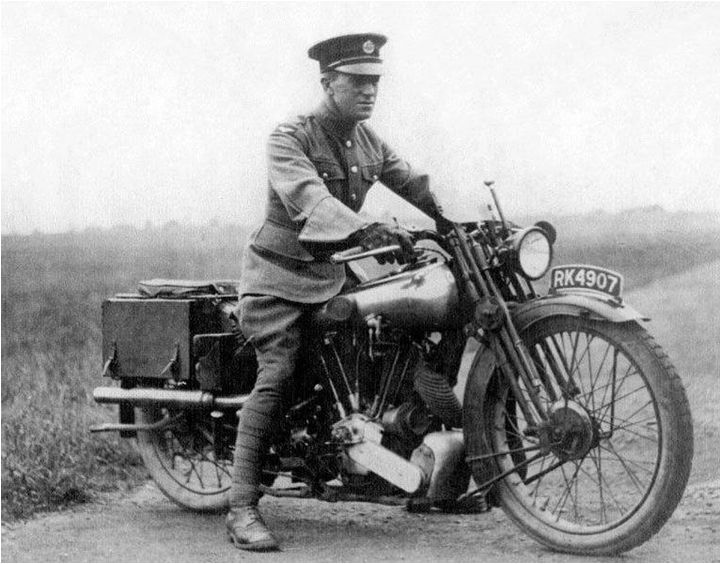
Here he is on one of his Brough Superiors.
In May of 1936 he made a short, local journey from his Cottage to the Post Office and collided whilst trying to avoid a cyclist. He died in hospital 6 days later. His Mother was in China at a Mission and on receiving the sad news she simply asked that he be buried in a nearby Church. The little Village of Moreton was selected.
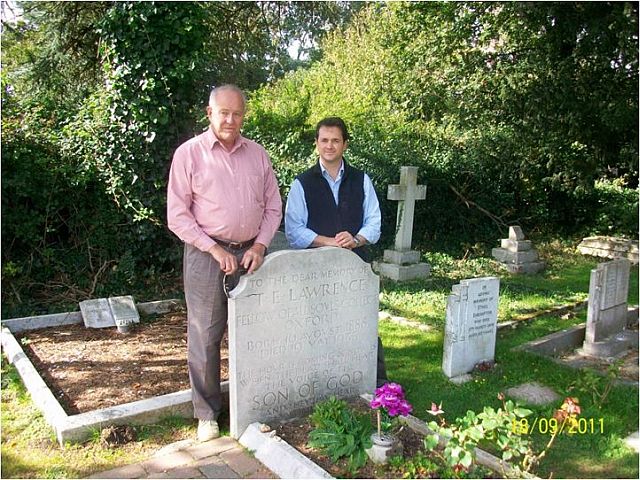
This picture shows myself and my Godson at Lawrence's last resting place, in Moreton
Church.
By amazing co-incidence, this Godson is a serving British Army Officer, and attended RMA
Sandhurst with Abdullah,
who is now the King of Jordan. They are still good friends.
Moreton Church is unique in the World in having all its glass cut by Sir Lawrence Whistler. This little church was bombed by a German Aircraft in the second World War. It has taken over 40 years for each glass window to be designed and cut by hand with the most exquisite pictures of scenes from the War and from religious symbols. It is well worth a visit. The wheeled cake stand in the local Tea Shop was the carriage for Lawrence's coffin at the funeral !
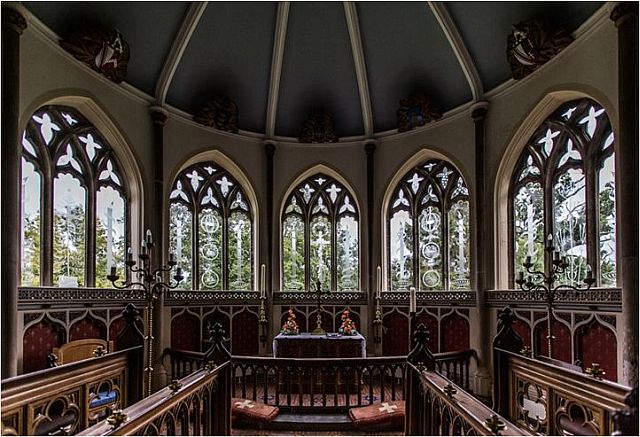
Some of the windows
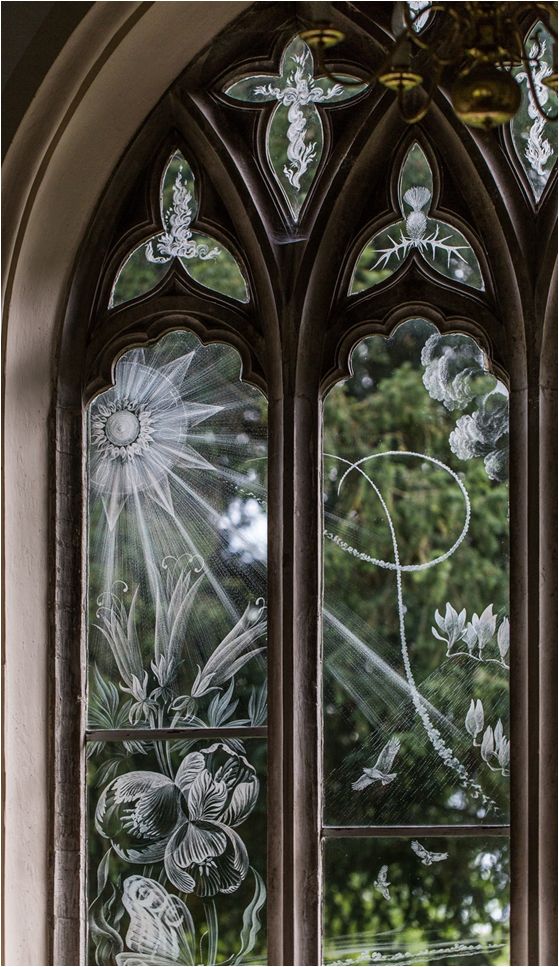
This window commemorates a young RAF Pilot from Moreton who was shot down over the English channel.
Lawrence's cottage - a converted labourers accomodation - is also worth a visit.
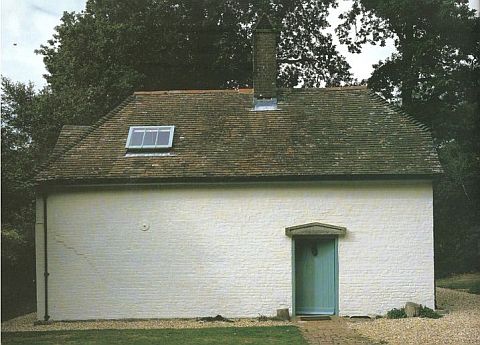
Return to Society's Home page
South African Military History Society / scribe@samilitaryhistory.org